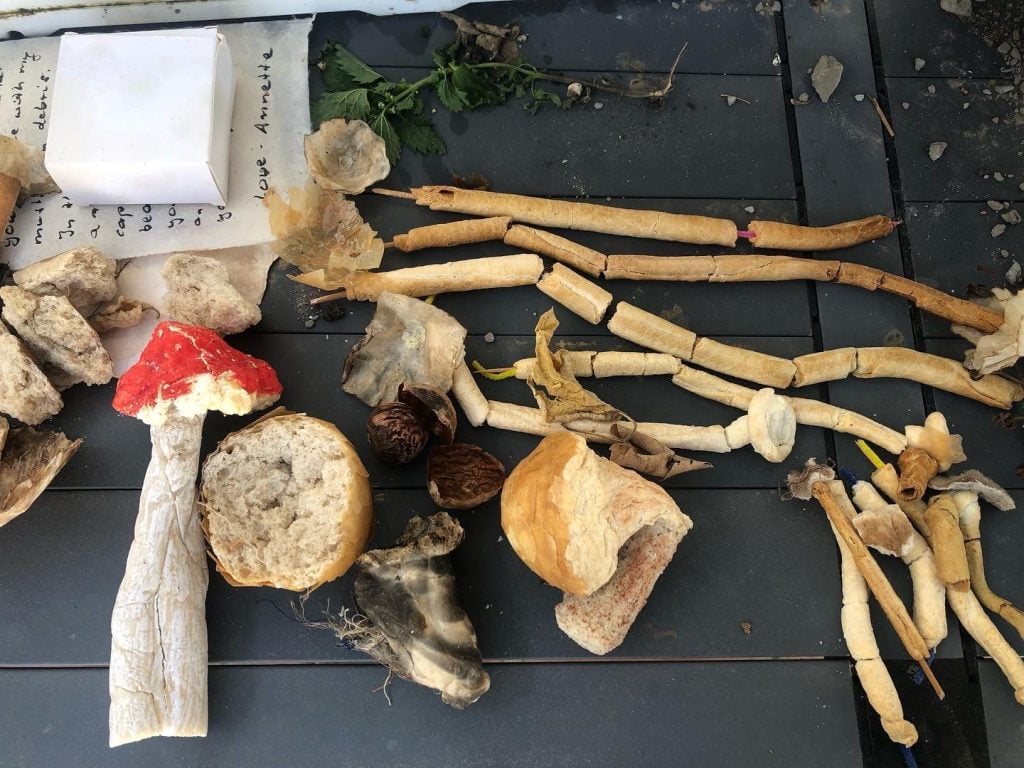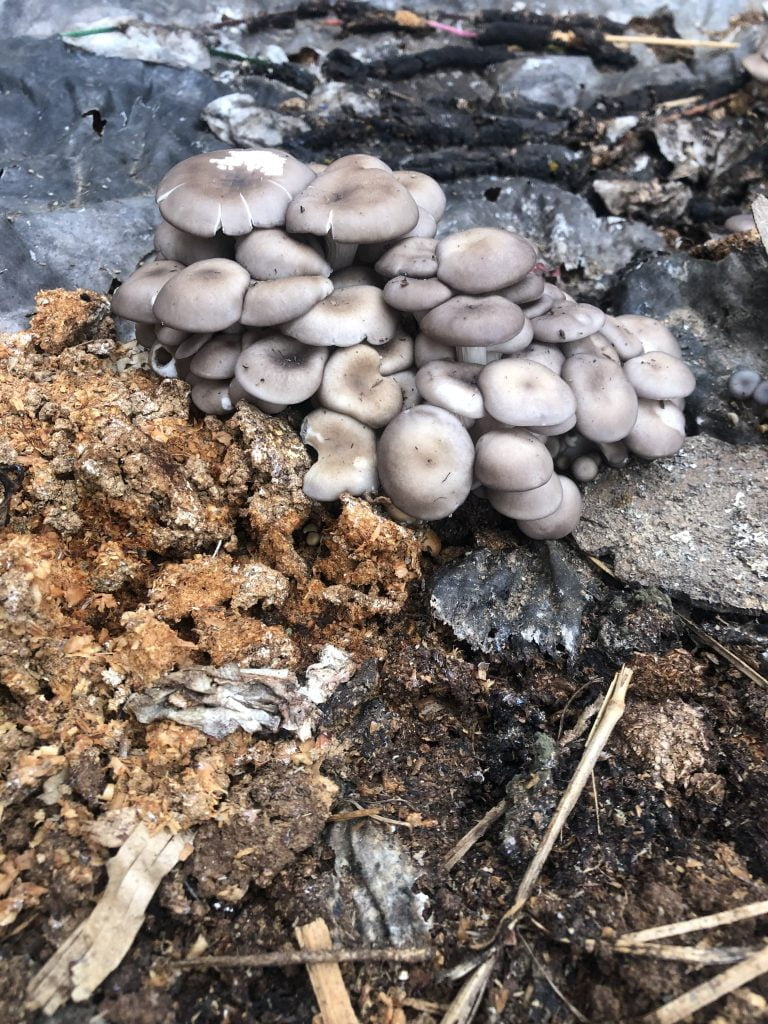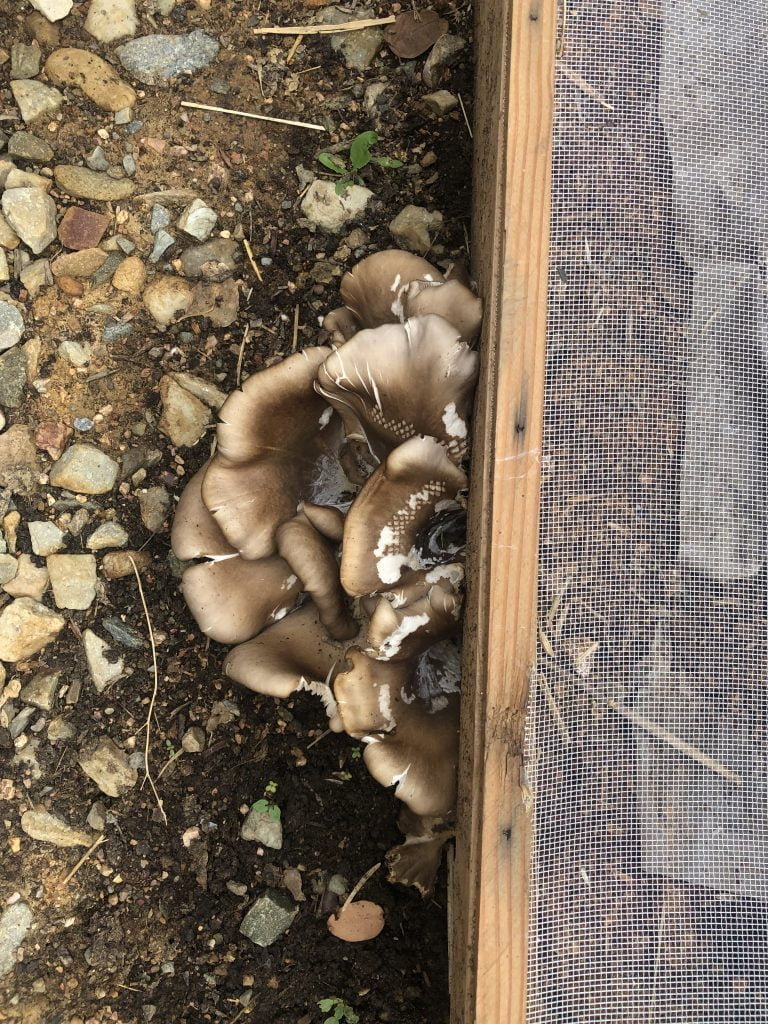I want to discuss drawing the same object for 30 days and the collaborative work that has by now been outside in our garden for around three months, which I would like to continue with as part of this research project. My idea is to contemplate with words and consider Jaimini Patel’s work. In both practices, I see a mindful action carried out. I am very aware of observation and the repetitive nature of the process.
I made no rules other than letting a process be open and committing to taking care of my role, whether to draw or observe. In terms of outcome, I saw it as getting close to the thing I was making and enjoying the process I engaged with. Regarding how each drawing will commence and with what or on what I will do it stayed open. I am also unsure of how and if the work outside will deconstruct. Doing the work soon became repetitive, time-based, and defined in terms of place.
Daily Drawing: I do not have specific instructions on the duration of my daily work, but I work around 10-25 minutes daily on each drawing. I committed to not overthinking a work, embracing mistakes and allowing chance elements into the process. I kept doing it as the first action when I walked into my studio in the morning. It would typically happen between 7:30 and 8:30 daily. I explored other media and paper supports and did not only work in my sketchbook. I stuck to counting the days and adding the date on every work. I used a few videos, which made me wonder if the work can also sit with a performative action. I do think it opens up possibilities of creating new work as performances.
Deconstruction of Involution: I do not document the process with images daily. Should I? I have to date, taken at least 150 photos and made 40 short videos. I see the basis of the work critiquing the permanency of a work of art and how by questioning this, I, as the artist, have the opportunity to collaborate with ‘the other’ and be informed by the research outcomes. I learned that I could encourage growth and learn to get comfortable with decay and death by working closely with mushrooms. I can harvest the mushrooms which grow on the work – some for ink and others for their spore. This cycle can become a continuous beneficial relationship. The images below show the start and the current state of the space.




Doing work and establishing it around instructions have a solid inspirational benefit. I view the work as a process over time, learning to be comfortable with a daily routine task, doing things a bit slower and contemplative and finding fresh ways of staying committed and enjoying the process. I looked at how Patel sees the activity of repetitive performances and asked myself about self-observation and making an ‘everyday’ practice visible through research. I do think there are also the results to consider: the final body of work. I need to develop a system for recording my observations in situ and not rely on a type of retrospective reply.
I want to think that my body of work will develop by involving a parallel running of research and activity, which are linked but will also inform and or critique each other.
List of illustrations
Fig. 1 Stander, K. (2022) Site for Involution [Photograph] In possession of: the author: Langvlei Farm, Riebeeck West, South Africa.
Fig. 2 Stander, K. (2022) Objects made by Annette Holtkamp.[Photograph] In possession of: the author: Langvlei Farm, Riebeeck West, South Africa.
Fig. 3 Stander, K. (2022) Mushrooms on site [Photograph] In possession of: the author: Langvlei Farm, Riebeeck West, South Africa.
Fig. 4 Stander, K. (2022) Oyster mushrooms next to site [Photograph] In possession of: the author: Langvlei Farm, Riebeeck West, South Africa.
Bibliography
Loveless, N. S. (2014) Practice in the Flesh of Theory At: https://utpjournals.press. doi/pdf/10.22230/cjc.2012v37n1a2531 (Accessed 06/12/2022).
McCullum, Ian. (2005) Ecological Intelligence Cape Town: Africa Geographic
Mau, Bruce, (1998) The Incomplete Manifesto for Growth At: https://brucemaustudio.com/projects/an-incomplete-manifesto-for-growth/ (Accessed on 01/12/2022)
Moma (2019) Richard Serra: Verblist. 1967-68. At: https://www.moma.org/collections/works/152793 (Accessed on 20/11/2022).
Patel, J. (2016) Home. At: https://www.jaiminipatel.com/ (Accessed on 6/12/2022)